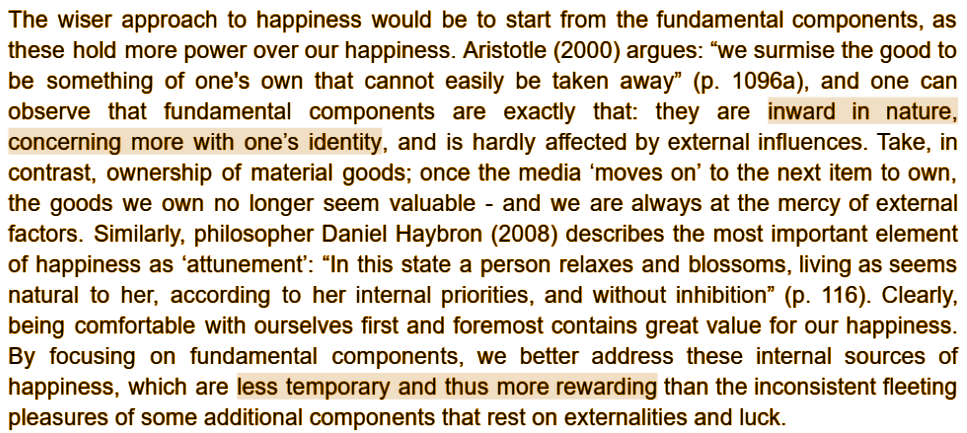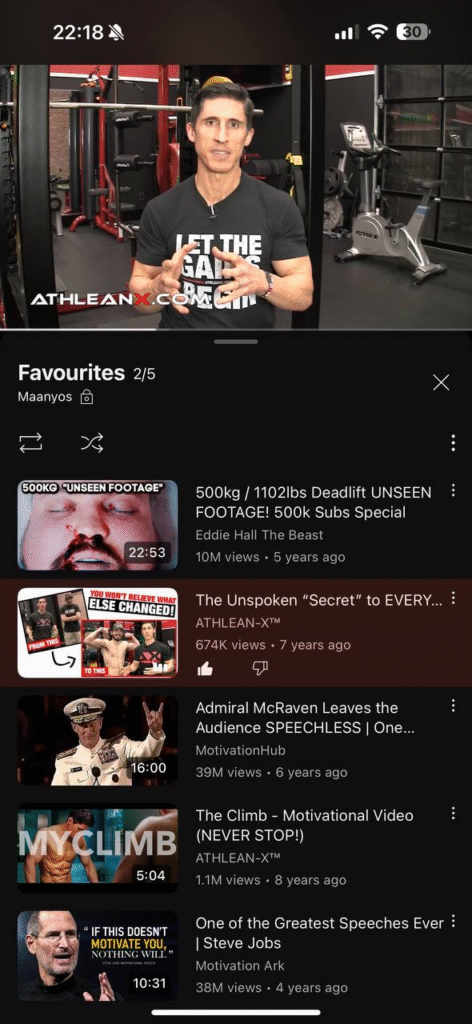Happiness is deeply personal, and everyone has their own sources of joy and fulfillment. Some find happiness in art, music, or deep conversations, while others seek it in adventure, career achievements, or relationships. When I took a USP course on happiness, I learnt about various theories, but I didn’t anticipate how one in particular, the life satisfaction theory, would later resonate so strongly with my weight lifting journey.
What began as a pursuit of strength and appearance slowly evolved into something deeper — a journey of self-discipline, resilience, and personal growth. Over the years, I came to realise that the way I measured progress shaped my sense of happiness — not by outcomes beyond my control, but by the effort, discipline, and small wins I could claim as mine. In this post, I will explore how my understanding of progress evolved through weight lifting, drawing connections between theory and lived experience.
Happiness
My very first course at USP three years ago was a foundational reading and writing course titled Conditions of Happiness. I chose the course because I saw happiness as an important, if not the most important, aspect of life. Yet, happiness seems to be an elusive part of life that people spend little attention on, and far too often struggle with. I wanted to understand what happiness really meant, what made people happy, and what I could do to cultivate it for myself and others.
In the course, I explored three prominent theories of happiness: hedonism, life satisfaction, and eudaimonia. Hedonism defines happiness as moments of pleasure, such as eating a favorite meal or receiving a gift. The life satisfaction model, by contrast, views happiness as a more stable, long-term state based on reflective evaluation of one’s life. Finally, eudaimonia, rooted in Aristotelian philosophy, defines happiness through virtue and personal growth, a more objective perspective.
I was particularly drawn to the life satisfaction model because it framed happiness as a lasting trait rather than a fleeting state of mind. In my final paper for the course, I explored happiness in the context of modern society and argued that a life satisfaction approach could help build a more resilient form of happiness amid uncertainty and external pressures.

One idea I emphasised in that paper has stuck with me ever since. I noted that the life satisfaction approach focuses on aspects of life ‘inward in nature’, citing examples like health and morality. Specifically, these inward aspects of life are things within our control that are insulated from externalities. This inward-facing perspective later shaped how I understood the impact of weight lifting on my well-being, shifting my view of it from a simple routine to a practice fundamentally aligned with the life satisfaction theory.
Confidence In Strength
Ten years ago, when I was 15, I stepped into a gym for the first time. The scent of rubber mats and metal and rhythmic clanking of weights felt both intimidating and exciting. I remember feeling like a child who had wandered away from his parents — small, out of place. I thought, “This is what the big guys do.”
At the time, I was a skinny kid who didn’t think much of myself. My goal was to build a physique like the rugby players in my school, believing that strength and size would earn me validation. But over the years, as I grew bigger and stronger, my perspective changed. I started to care less about how others saw me. Instead, setting and reaching personal goals mattered more to me, proving to myself what I was capable of.
Throughout this journey, one of my main sources of information and inspiration is AthleanX, a YouTube fitness channel run by Jeff Cavalier. Last year, I came across one of his videos where he talked about the confidence boost that weight lifting had given him and others. In that video, Jeff compared his younger self to his present, highlighting how his posture, voice, and presence had transformed over time. Then he said something that stuck with me:
“The one body you have is really the only thing that you can control in this life… Through your own efforts, you are able to set new standards that you never once at one point thought were achievable.”
This struck a chord in me – the realisation that my body was something I had full control over. The weights in the gym never change, but the person lifting them does. No one else can do it for me.
Progress in weightlifting wasn’t about how others perceived me anymore, it was about the standards I set for myself: showing up consistently, pushing through plateaus, and celebrating the small wins that only I could fully understand. I was so inspired by the video that I added it to my ‘favourites’ playlist — which, to this day, contains just five of the most meaningful videos I’ve ever watched.

There is plenty of evidence linking exercise with improved mental health. Physiologically, the release of endorphins and dopamine — the so-called “runner’s high” — clearly aligns with hedonistic happiness, and can explain short-term boosts in confidence. But I think there’s more to it than that, something deeper and longer-lasting. The psychological transformation Jeff spoke about is exactly what the life satisfaction theory encapsulates: a reflection not just on how you feel in the moment, but on the kind of person you’ve become through persistent effort.
Weights Of Happiness
Reflecting on these two experiences, I see a strong connection between the theories of happiness I learnt in class and my weight lifting journey.
When I first started weight lifting, my motivations were mostly external — to impress others, gain respect, maybe make more friends. I now realize that much of this stemmed from insecurity, and could easily have become problematic. Had I continued measuring progress through the eyes of others, I would have remained stuck in a cycle of dissatisfaction — always chasing approval, never feeling adequate. My happiness would have rested on the ever-changing opinions of others.
Instead, I began focusing on self-comparison. I set realistic goals and took full ownership of my progress by learning the science behind weightlifting and nutrition, applying that knowledge to my routines, and staying disciplined in my efforts. Over the years, I’ve experienced cycles of success and struggle – periods of momentum where I thrived on consistency and times when I lost motivation and backslid. But in every season, I knew exactly what had caused the progress, or lack thereof. I earned my progress. To me, this is the essence of life satisfaction: the pursuit of growth, rooted in one’s own choices and efforts.
I see very clearly today that my fitness journey did far more for me than for anyone else. The confidence I built in the gym spilled into every other part of my life. It was instrumental for my personal growth, by giving me the confidence to leave my comfort zone, take risks, and try new things, as I elaborated in the previous post. It made me more resilient — less reactive to setbacks, more accepting of challenges.
My happiness, much like my strength, is something I built on my own. In doing so, I’ve gained not just physical strength, but a mindset that continues to shape how I live. This journey taught me that the real measure of progress does not lie in external factors, but rather in the process of growth that only I can be responsible for. I am thankful for where this path has taken me and can’t wait to see how far I can go.
